Merlo, having noticed that many tractors are fitted with a loader to become a quasi materials handler, has turned the idea on its head and fitted a materials handler with a three-point linkage to make it a quasi tractor.
Loader-equipped tractors can perform well and do all that is required around a farm, yet purpose-designed loaders will still have the edge over them in many instances; does the same apply to loaders pretending to be tractors?
User views
This question is best answered by asking a farmer who has had experience of using the machinery for nearly two years now, and is more than happy with it.

Gareth and Diarmuid McCarthy are a father-and-son duo who run both a dairy farm and plant hire business near Castleisland in Co. Kerry.
Gareth had already started his business in the construction industry when he inherited a family beef farm.
Having suffered financially in the first few years, he switched to dairy and promptly installed a robotic milking machine, one of the earliest in the country.
Robot woes
Despite many hardware issues at the start, he persevered with the idea and now the herd happily milks itself while they get on with running the diggers and tractors in and around the county.
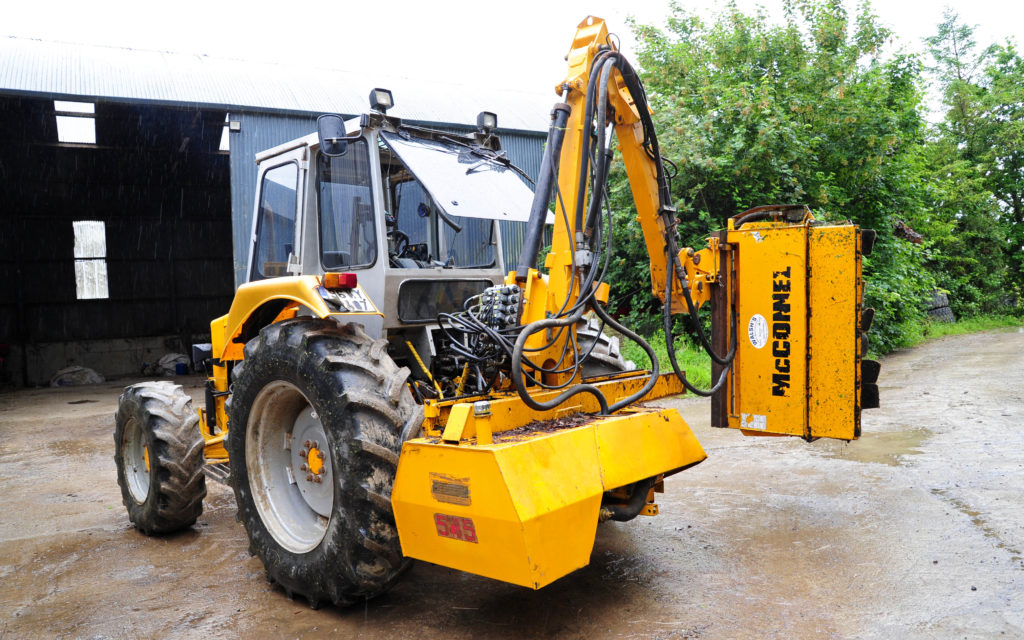
Being a first adopter is something of a trademark with Gareth; he brought a JCB Fastrac into the country within two years of its launch and had a Moffett reverse-drive tractor fitted out with a hedge cutter, a combination he believes to be unique.
Given this background, it comes as no surprise that the first Merlo MF34.7 Multifarmer loader to arrive in Ireland found its way to his yard as a demo unit, and never left.
Merlo Multifarmer concept
The Multifarmer concept involves attaching a three-point linkage and power take-off (PTO) to the rear of a telescopic loader and so, in theory, greatly increasing its versatility.

On paper this sounds a fine idea, but it does not follow that it will work out as well in practice.
After nearly two years of use, Gareth and Diarmuid are convinced that not only does it work in the real world but as an all round farm tool, there is little, if anything, to match it.
Broad range
There are now eight models of Multifarmer available, indicating that the concept is proving popular in other markets as their inherent versatility becomes appreciated.
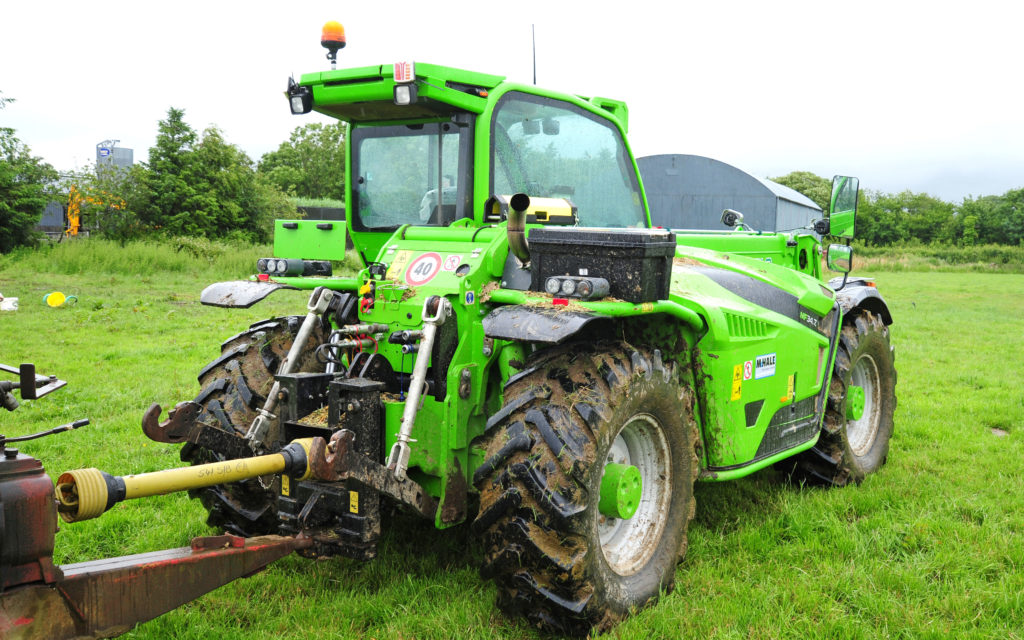
There are two sections to the range; the smaller section, which comprises six models, is powered by a Deutz four-cylinder engine of 136hp driving through either a hydrostatic or continuously variable transmission (CVT) transmission.
The remaining two models have a 170hp FPT engine, the major difference between them being the lift height, the larger reaching 8.8m.
Base model
The model that we are looking at here is the basic 136hp version with hydrostatic transmission, a 6.8m lift height and maximum lift capacity of 3,400kg.
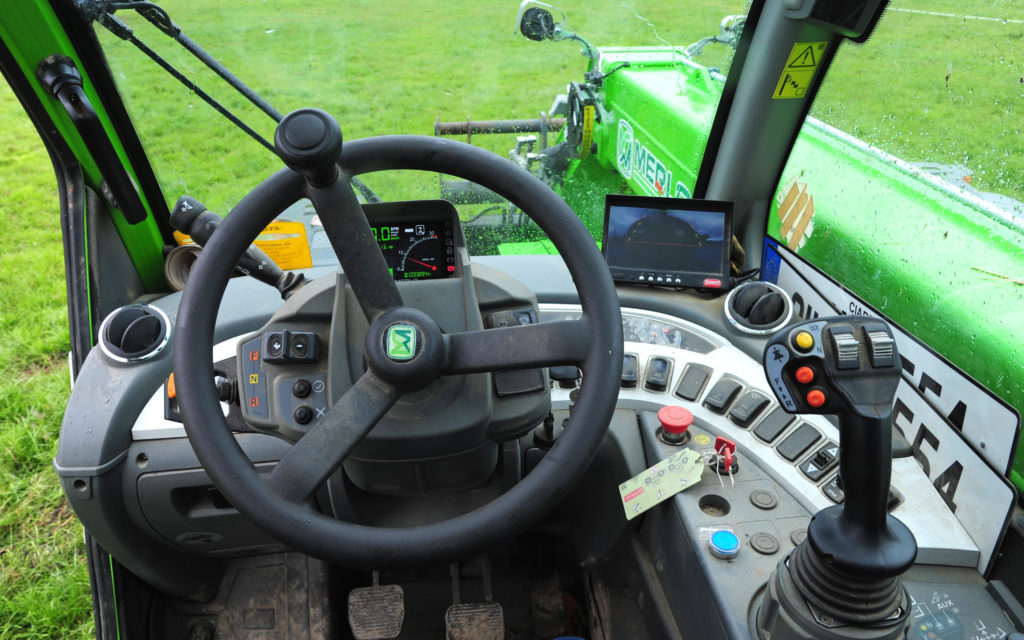
The price paid two years ago compared very favourably with 136hp tractors at the time, especially if they were fitted with a front-end loader which would add both expense and weight.
Weight is, of course, one of the big factors in deciding whether to go for a machine of this sort and at 7,400kg, the Multifarmer might be considered a little too muscular for those seeking to minimise soil compaction.
Safety in weight
Yet, it also has its advantages. With a lift height far exceeding that of front-end loaders, it is reassuring to have some ballast at the bottom end of the boom keeping things stable.

This machine is, after all, an adapted loader, so features which make materials handling operations safer and more efficient are not to be dismissed.
Another feature of telescopic loaders is that the cab is mounted low and to the left-hand side, it is also fairly confined when compared to tractors.
Sourcing implements for the Merlo
Again, this is a mixed bag; low cabs make getting in and out easier, which is always appreciated where the work involves stock, and it doesn’t have acres of glass to cook the driver in the summer.
Side-mounted cabs that help keep the centre of gravity low are essential in high-reaching loaders, yet there are drawbacks, visibility to the right and rear being the main one.

This can, to some extent, be relieved by finding the right implements. The McCarthys have sourced a left-handed flail mulcher which is easily viewed from the cab; it is made by Zanon S.r.l. of Italy, but is not directly imported into Ireland.
With the growing popularity of the Multifarm, it is to be hoped that more manufacturers will turn their attention to serving a market for ‘left-handed’ implements.
General farm use
Slurry spreading is another field operation undertaken by the Merlo and here the rear view is adequate, certainly with a splash plate. Hitching is helped by a CCTV camera mounted at the rear.

Hauling bales in from the field with a twin bale handler is also a breeze according to Diarmuid who will happily spend all day in a cab that many will find rather cramped.
It does though, have efficient air conditioning and there is plenty of space behind the seat for storage. It must also be remembered that operators of many construction machines work in similar conditions so perhaps it is more a case of tractor drivers being spoilt.
Easy hitching
Another significant advantage over the standard tractor is that there is ample room at the rear for hitching and mounting implements. There is no need to burrow down between machine and tractor to attach the PTO.
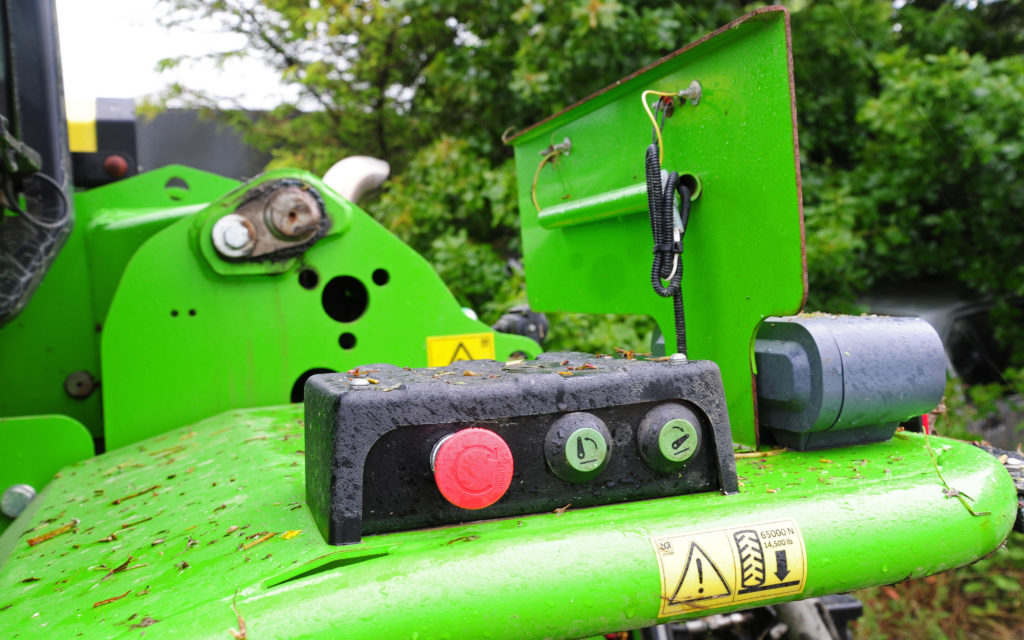
The downside is that the room is there because the wheels are smaller, reducing both ultimate traction and ground clearance. These are factors which will need to be taken into account when deciding upon the machine.
Why buy a Merlo Multifarmer?
The question as to whether going down the Multifarmer route is a good idea or not depends entirely upon the pattern of tractor use on a farm and the willingness of the buyer to consider new ideas.

Merlo is keen to promote the machine as being as at home in the tillage field as it is in the stock yard, yet that might be pushing things a little too far when faced with the heavy ground and wet conditions of Ireland.
For grassland farms, however, it does hold great potential. Most of the field operations associated with forage production can be carried out, although fertiliser spreading in early spring may be hindered by its weight and small wheels.
Merlo Multifarmer, master of loading
Tedding, raking, topping, even baling can all be undertaken by the Multifarmer, according to Merlo, and, with a few reservations concerning visibility, it appears that this would indeed be the case.
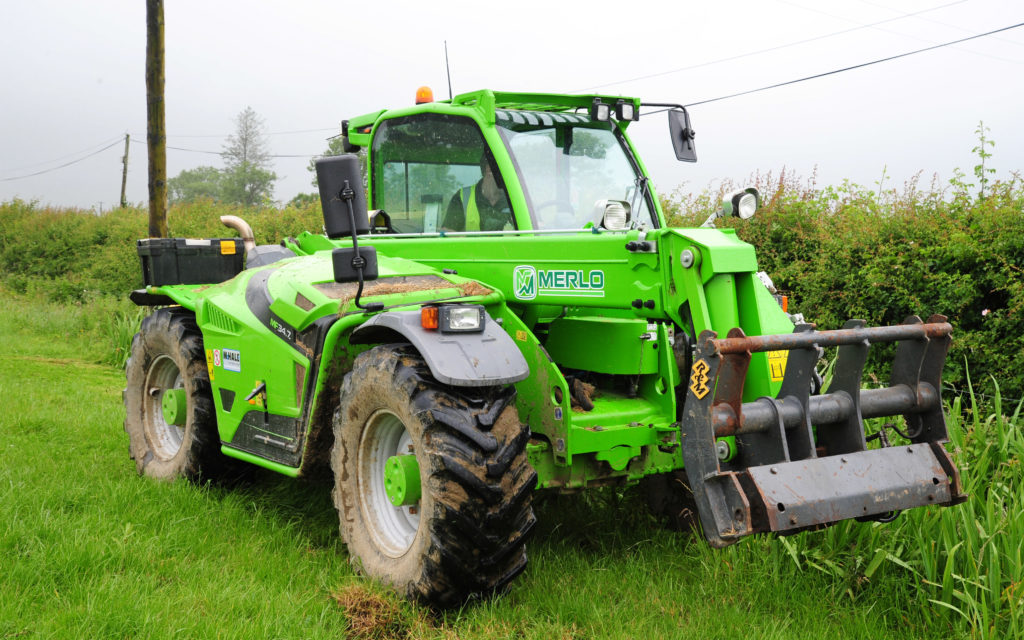
Back in the yard it becomes a fully fledged loader that is not only able to load a diet feeder but power it as well, at a purchase price which will compare very favourably with a tractor and loader.
It is true that Merlo raised a few eyebrows and prompted a few sniggers when it first introduced the concept, but perseverance has brought a versatile tool which would bear thinking about when next considering the make-up of a grass farm’s machinery fleet.

